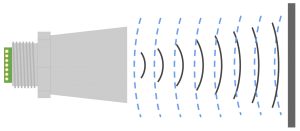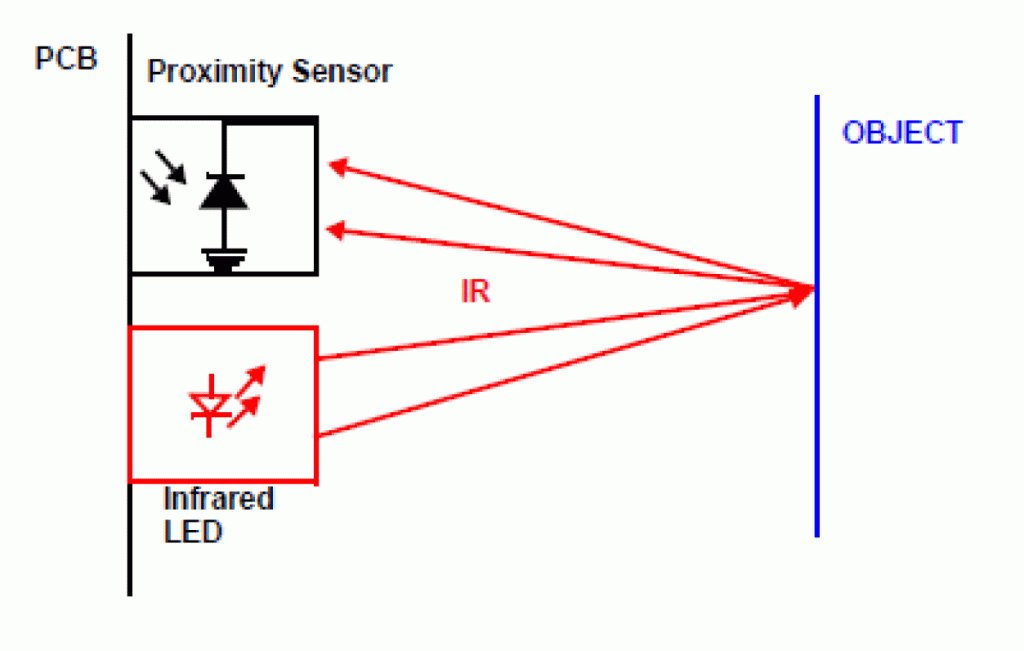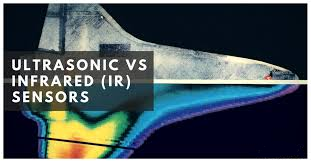Your choice of a sensor in your application can be challenging for any project. The performance of your system depends greatly on the reliability of your sensor and other components of the application.
In order to determine the right sensor for your application, there are things that need to be taken into consideration for sensor selections.
- Accuracy – How close the reading is to the true distance.
- Resolution – The smallest reading or change in readings that can be reported.
- Precision – The smallest reading that can be taken repeatedly and reliably.
Ultrasonic vs Infrared: how do they work?
Ultrasonic sensors work on the principle of reflected sound waves and are used to measure distance. One sensor can detect others operating nearby. Sound waves are emitted by the ultrasonic sensor and they’re reflected back if there is an object in front of it.

Basic Sonar Illustration – A transducer generates a sound pulse and then listens to the echo.
Ultrasonic sensors are, for the most part, completely insensitive to hindering factors like:
- Light
- Dust
- SmokeMist
- Vapor
- Lint
Ultrasonics aren’t as good as Infrared at defining edges of an area.
How Infrared (IR) Sensors Work
Infrared sensors work on the principle of reflected light waves. Infrared light reflected from objects or sent from an infrared remote or beacon. Infrared sensors are also used to measure distance or proximity. The reflected light is detected and then an estimate of distance is calculated between sensor and object.

Infrared sensor values normally fluctuate in variant light conditions.
When objects pass
Choosing your sensor is completely dependant upon your application. There are a lot of limitations in
































